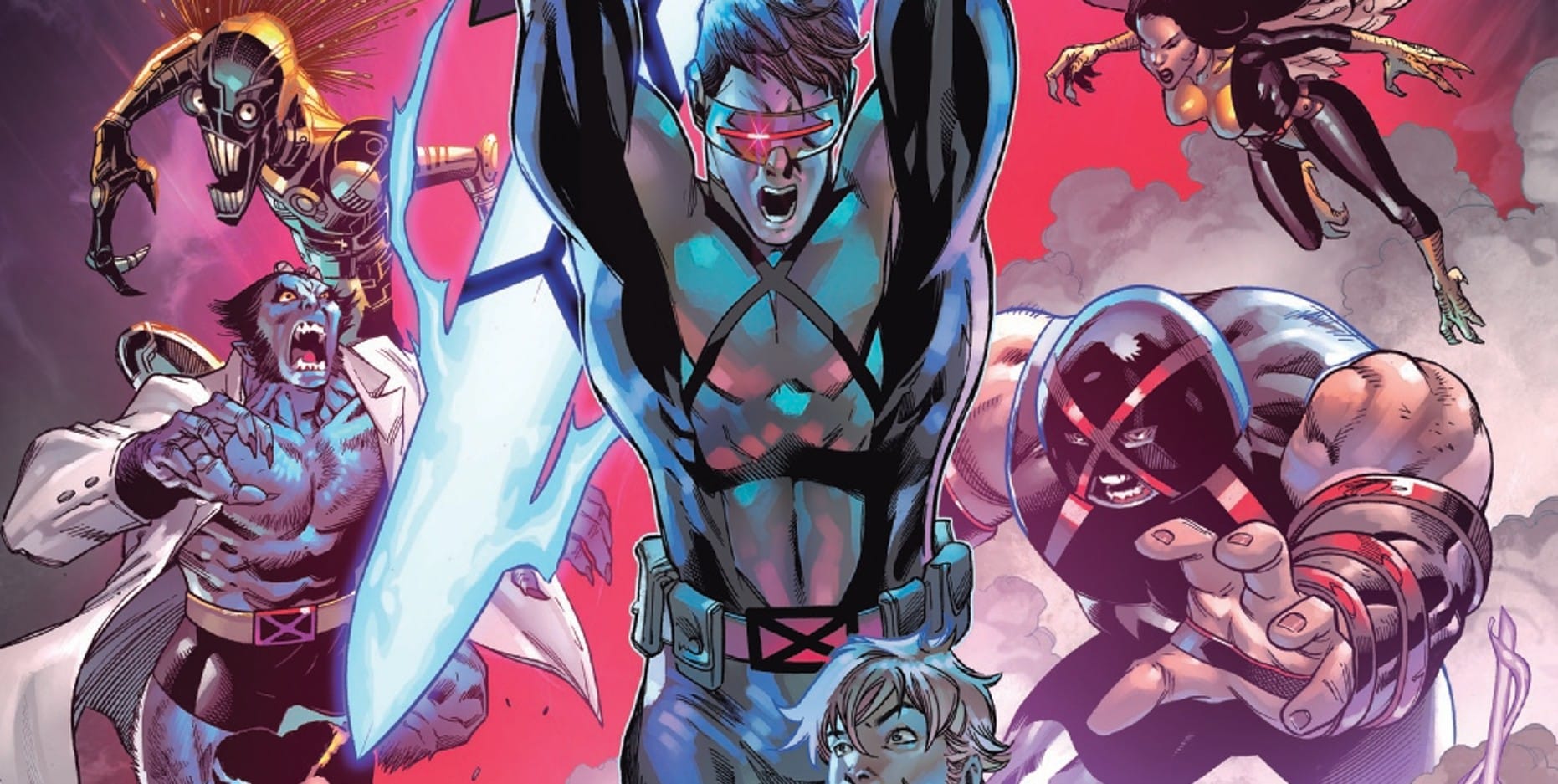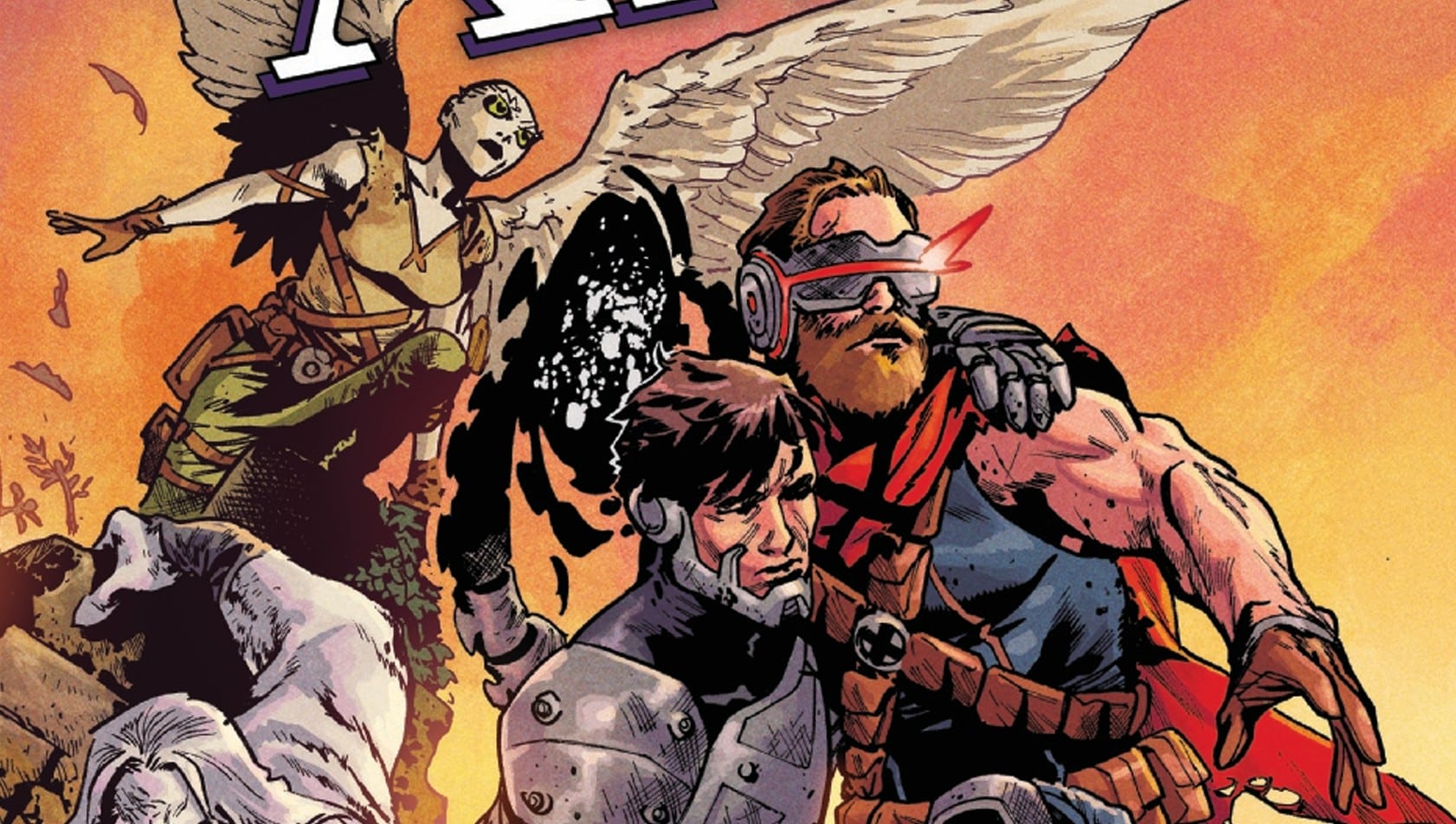The formerly teenage genius formerly known as Shadowkat is back in Chicago, back behind the bar with a dishrag for a paycheck, done with rescuing teenage mutants for good. See how long that one lasts in Exceptional X-Men #1, written by Eve Ewing, drawn by Carmen Carnero, colored by Nolan Woodard and lettered by Joe Sabino.
Sometimes a canon reset is just a canon reset. If you’ve read Mekanix #1, or X-Men Unlimited (first series) #38, or X-Men Prime (2017), or X-Men Gold #36, or Dazzler: X-Song — to name the most obvious examples — you’ve pretty much read a lot of this comic before.
Also, it’s great. In the same way, sometimes vanilla ice cream is vanilla ice cream: It’s there to remind you why you like ice cream in the first place, and it’s a first stop before you move on to saffron butterscotch mint. Eve Ewing and Carmen Carnero know exactly how Kate looks and acts in these moments of flight, of sadness, of trying to pass. They know what she says and does when she’s sick of it all, and what brings her back to the heroic life — and the role as a formerly teenage educator — that suits her. They understand what her life will let them spell out, and what has to come in hints, or wait for next steps. And they’re setting her up — I think — as the head of a school for wayward teenage mutants. Again. What else, after the fall of Krakoa and the end of her would-be pirate enterprise, did you think she would do with her life?
Katherine Pryde has hung up her uniform. She’s burned out, disillusioned, charged with self-hatred; no longer feeling exceptional; romantically on her own; very much done joining, training and leading child soldiers; and even more done with Charles Xavier’s dream. So, as she’s done before, she dives back into Chicago, finds a civilian gal pal roommate (this time it’s Priti, her best friend from middle school), and tends bar. She’s made a clean break: She’s not even in graduate school (so no more super-science tie-ins). Nor does she wear the adventurous leather outfits that she chose for her bartending duties last time around (in Mekanix). Oversized button-down shirts; ripped-up, cuffed jeans; and black Chucks will do fine for a girl who wants to blend into the background but still look sweet and approachable.

Ewing and Carnero devote page after page to slice after slice of this anti-heroic, aggressively normal life, and the higher-ups let them. The tension, such as it is, comes from Kate’s narration, and from what her roommate and co-workers observe: Our girl has been working herself into the ground, trying to wash so many dishes and serve so many customers and watch so much dumb TV at home that she doesn’t have to think about what’s happened (the entire fall of Krakoa) nor about what she wants. Our girl throws herself into projects, believes in the team and the dream like nobody’s business, and when it falls she’s been known to feel suicidal (see Excalibur: The Sword Is Drawn if you don’t believe me. Ewing knows this character, and knows how a quarter-life crisis looks for so-called real-life normal girls, too.
She also knows Chicago, and the University of Chicago far better than I do, at least as well as U of C alum Kate Pryde: If you’re a Bucktown resident, let us know if you recognize these city blocks! They’re beautiful. So is Kate and Priti’s pad, and so is “Mikhail Baryshnikov, cutest, sweetest dog in the entire world,” a nod to Kate’s ballet background, and so is the panel where Carnero shows Kate telling Priti, “I’m fine” (she’s not fine). Say it with me: I’ve Been There.
Now say it again at the rock show: Our Kate goes out on a date, hoping to see her onetime favorite band Lorem Ipsum, doing “normal people things. My expectations are zero. But I get to see a band I like. And go out with someone I didn’t meet when I was a literal child.” Given the way that our Kate talks about her date (watch the words closely) it’s almost certainly somebody not named Peter, and that is all I’m going to say about this part of the issue, because given the history of this character I’m afraid to ruin it with attention.
Kate ruins it anyway: She got the (calendar) date for the (romantic) date wrong (I’ve been there, too). Instead of “a crowd of people my age eager to deny they’re getting older,” dressed like Gen Xers who wish they could look nonchalant, Kate sees a queue of twee anime girls, a unicorn backpack, another whose backpack is Luma from Super Mario Galaxy, blue hair, pink hair, Zoomer vibes. Why not go see, especially when the Carnero and Woodard crowd scenes look so much fun? The foreground characters throughout the issue remind me of Terry and Rachel Dodson’s X-art 15 years ago: stylized, prettier than life, attractive in the way that real people can look conventionally attractive, somewhere between ultra-realism and Art Nouveau. I could live here for a while. Why not?
Why not, indeed, go see Bunny Starlite Dreams, the Earth-616 equivalent of Rainbow Kitten Surprise? Why not add an extremely trans-coded Zoomer band to your attempt at starting a new life in the big city? Why not, indeed?
Because you’ll find what mutants always find at rock shows: a teenage mutant under threat who needs saving. Kate hesitates for five panels, reminds us that she knows she’s in a canon reset (“I know exactly where it’s going. Tale as old as time”), and then jumps in, leading our new kid (gold metal skin, ropy prehensile dreadlocks) on a phase-based chase through the club and down the block as mutant-hating cops go after her. The chaos inside the arena gets non-rectangular, chaotic panel borders. Once we’re back running through offices and libraries, the pace doesn’t slacken, but the panels return to standard forms, because the music’s gone. Carnero’s good.
By the end of the chase, we’re in Kate’s car, and Kate’s giving the speech she always gives (“Being a mutant is something to be proud of”), and Carnero’s got the facial expressions that suit this familiar conversation down: wary, then open, then plucky, and then relieved. Ewing even figures out some stage business with Chekhov’s driver’s license that lets our Kate take back the name Kitty. And that’s the moment we know, if we didn’t before, that a school for young mutants will open up — perhaps in Chicagoland — soon.
Is it subtle? Hell no (except for that one panel about the date who stood Kitty up). Is it the same old mutant metaphor? Hell yes. Our new kid’s grandmother tells her she has to be strong: “But grandma, I don’t want to be strong! I just want to be myself!” Sounds good. Is Emma Frost bringing the band back together? She is (and her luxury hotel room’s a disaster). Is Bobby Drake coming? Sure (wouldn’t be a canon reset without at least one of our Kate’s exes on the team). Has vanilla ice cream ever tasted so refreshing, after a batch of globe-spanning tragedy and cosmic mess? Maybe not. I’d like another cone, with rainbow sprinkles, if you’ve got them. And a pint to take home, for the kids. Some of them haven’t had this flavor before, and everybody deserves a first time.

Points of Pryde
- Lockheed, of course, sleeps beside Kitty, in Kitty’s room. How does he get along with Mikhail Baryshnikov?
- Both Bobby and Kitty see an advertisement for a sequence-your-DNA app biz called Verate. I’m gonna guess they’re owned by the next Big Bad.
- The package Kitty unwraps at the end, while she tells us she’s “gotta get to work”? This one’s for real-life teachers: The first time a student gives, or sends, you something special, after you’re no longer able to give them a grade? Yeah, tears. You’ll see.
Buy Exceptional X-Men #1 here. (Disclaimer: As an Amazon Associate, ComicsXF may earn from qualifying purchases.)
Stephanie Burt is Professor of English at Harvard. Her podcast about superhero role playing games is Team-Up Moves, with Fiona Hopkins; her latest book of poems is We Are Mermaids. Her nose still hurts from that thing with the gate.






